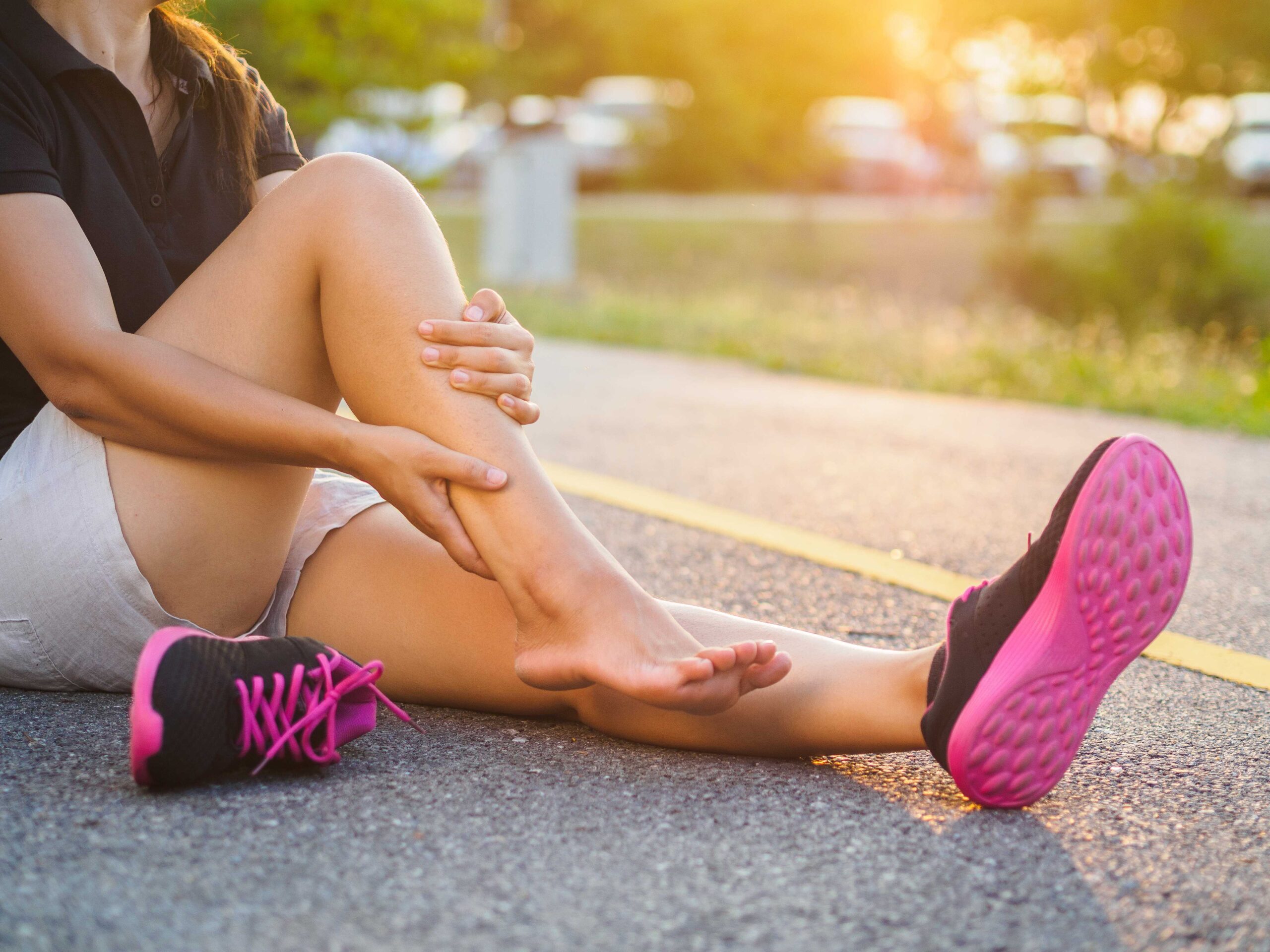Calf muscle strains are painful and very tricky to recover from. Poor rehab often results in prolonged weakness and pain with walking, climbing stairs, running, and jumping. This article teaches you how to recover from calf strains properly.
Two major muscles make up your calf. The gastrocnemius muscle is the large outer muscle in the back of your lower leg. The smaller soleus muscle lies underneath your gastrocnemius. Both point the foot down like when stepping on the gas pedal of a car. These muscles are also highly active when pushing off during walking, running, or jumping. Calf muscle injuries occur as a result of normal daily activities such as walking or stepping down from a curb. Calf muscle injuries are also very common in sports such as tennis, football, soccer, and basketball.

Common symptoms of calf muscle injuries include sharp pain in the lower leg while walking or attempting to push off with your toes. Older adults and athletes with a previous history of muscle strains are particularly susceptible to calf muscle injuries. Larger individuals are also at an increased risk. Calf muscle injuries are very slow to heel with full recovery sometimes taking 3 to 6 months. They also tend to reoccur often, especially in athletes. Thankfully, early rehabilitation can expedite your recovery from these nagging injuries.
Proven Treatment for Calf Muscle Strains
Traditionally, treatment for calf muscle injuries has included rest, ice, compression, and sometimes medications to control pain. This approach will result in an initial decrease in pain. However, a more aggressive approach is required to achieve the best long-term outcome.
A 2018 study from Denmark, investigated the effectiveness of early versus delayed physical therapy on recovery after muscle injuries. Individuals receiving early physical therapy began treatment 2 days after their injury. Compared to those who delayed treatment, early physical therapy resulted in a pain-free recovery and a return to sports 3 weeks sooner.
These findings suggest too much rest early after a muscle injury can result in a prolonged recovery. The following exercises are components of this proven approach to recovery from calf muscle injuries.
Calf Stretch
Maintaining ankle range of motion and flexibility is important as your injured muscle heals. Gentle stretching will help your injured muscle heal at its normal length.
Begin sitting with your knee straight and a towel or belt wrapped around the ball of your foot. Pull your toes towards your shin and hold this stretch for 15 to 30 seconds. Performing the exercise with your knee straight emphasizes the stretch to your gastrocnemius muscle. Slightly bend your knee to emphasize stretching your soleus muscle. Perform this stretch multiple times each day.
Calf Isometrics
It is important to begin muscle activation exercises early after your injury. This will help diminish pain and facilitate blood flow to your healing muscle. Slight pain (<5/10) is acceptable during exercise.
Sit with your knee extended and your foot up against the wall or another immovable object. Gently push your toes and foot down into the wall like you are stepping on the gas pedal of a car. You will feel your calf muscle contract slightly. Hold the contraction for at least 10 seconds. Perform the exercise with your knee straight to emphasize activation of your gastrocnemius muscle. Slightly bend your knee to emphasize your soleus muscle. Perform this exercise multiple times daily.
Heel Raise Exercises
As your pain decreases, progress from isometric to heel raise exercises. This involves rising onto your toes from a standing position. Perform the exercise with your toes turned out to emphasize the inside aspect of your calf muscles. This is where most calf muscle injuries occur. Perform the exercise with your toes turned in to emphasize the outer aspect of your calf muscles. Hold weights or use a bar over your shoulders to increase the load. Perform 10 to 20 repetitions for multiple sets 3 days per week.
See Your Physical Therapist for Calf Muscle Strains
Other treatments, such as manual therapy, will expedite your recovery from calf muscle strains. More challenging balance and sport-specific exercises are incorporated as your pain decreases and strength improves. Full pain-free function takes several months.
Starting the right exercise program early is a proven approach. These 3 exercises are only a small sample of an effective physical therapy program. Your physical therapist can perform an individual assessment and design an exercise program based on your unique problems and goals. Contact us today if you have questions about which exercises are right for you.

